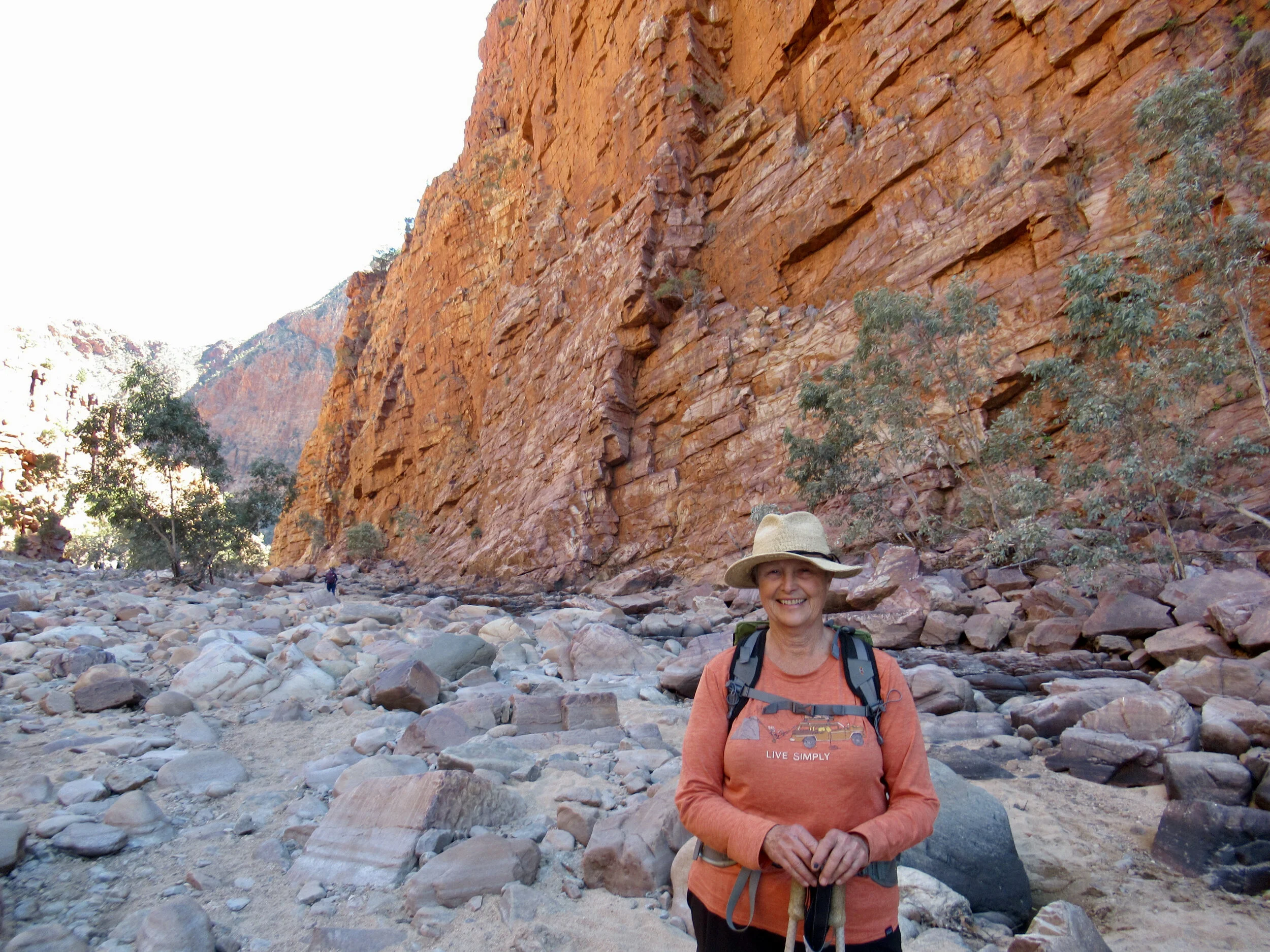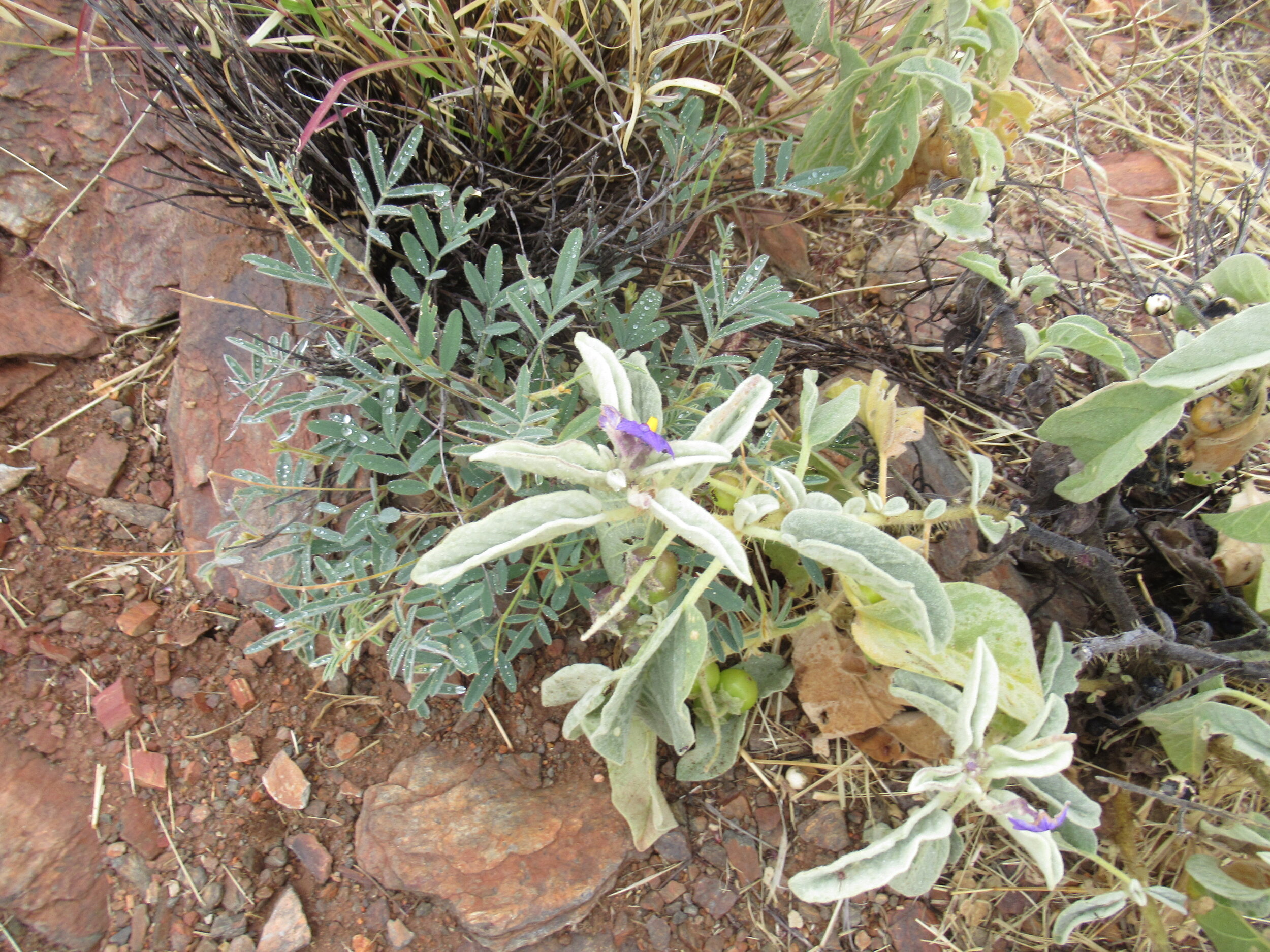A note to my Yarns from the Farm Readers—this is the sixth instalment of a series on biodiversity for our local newspaper. Earlier versions can be found in Yarns from the Farm on my website. Nan
In honour of NAIDOC week (4 -11 July) celebrating Aboriginal and Islander culture, I’m taking a side trip into the topic of bush tucker. During my hiking trip in Central Australia in late June, I had the privilege of listening to two indigenous presentations on bush tucker and bush medicine, from Raylene Brown (https://kungkascancook.com.au/rayleenbrown) and Kevin, guide to Standley Chasm.
Raylene recently featured on Master Chef, and her website has lots of Central Australian bush foods and tea for sale. We were lucky enough to be treated to appetisers created by Raylene, while she explained the botany and the culture around plants like the bush tomato, saltbush, wattle, quandong, and others.
Kevin guided our tour up Standley Chasm, showing us a number of food and medicinal plants, including bush blackberries, bush bananas, bush coconuts and “glorious indigo”.
Glorious indigo in Standley Chasm. Photo: Nan Bray
I was struck by two things in these presentations: the intensity of the flavours of the foods and the depth of indigenous knowledge about the plants in their system.
The intensity of flavour happens precisely because these are wild plants. They are chock full of secondary compounds—like tannins and alkaloids—that provide not only medicinal benefits (think tea and morphine) but also give each food its own unique flavour.
Selective breeding of food plants tends to prioritise logistics over taste, often reducing the level of secondary compounds inadvertently, and thereby making the food more bland. Think about the difference between store-bought tomatoes and those luscious garden tomatoes that even Oatlands gardeners strive to grow, precisely because of their better flavour.
I can report that bush tomatoes from Central Australia have an even more intense flavour that the few tomatoes I’ve managed to get to ripen here in Oatlands over 20 years of trying!
One of many species of bush tomato plants. Photo: Nan Bray
Tasmania has its own bush tucker, of course, with some overlap with Central Australia: wattle seed, Tasmanian bush tomato and mountain pepper, and many others. A good resource to learn more, and source the plants, is Taz Wild Plants (http://www.tazwildplants.com).
Indigenous knowledge about native plant nutrition has been built over tens of thousands of years, and is a unique cultural and nutritional resource that all Australian can and should celebrate.
Indigenous knowledge about the biodiversity of the landscape is critical to our ability to adapt to the coming challenges of climate change.
Australia’s unique ecosystems have adapted over millions of years to thrive in our highly variable weather patterns and soil conditions. Those adaptations will help modern Australia to cope with climate change—but only if we understand how they work.
Sturt’s Desert Rose, a variety of hibiscus. Photo: Nan Bray
An ecosystem is not something you can pull apart to study or fix, like you might a watch. It is a dynamic, inter-related system, where one “moving part” can serve many different useful functions, and the system is stronger and more resilient to disruption because it works as a whole.
Indigenous ecosystem knowledge comes from a lived experience, rather than a cerebral scientific analysis, and its intuitive, inclusive approach is in many ways better suited to understanding the way complex systems respond to change. Engaging Indigenous knowledge is a powerful tool in Australia’s fight to adapt to climate change.




